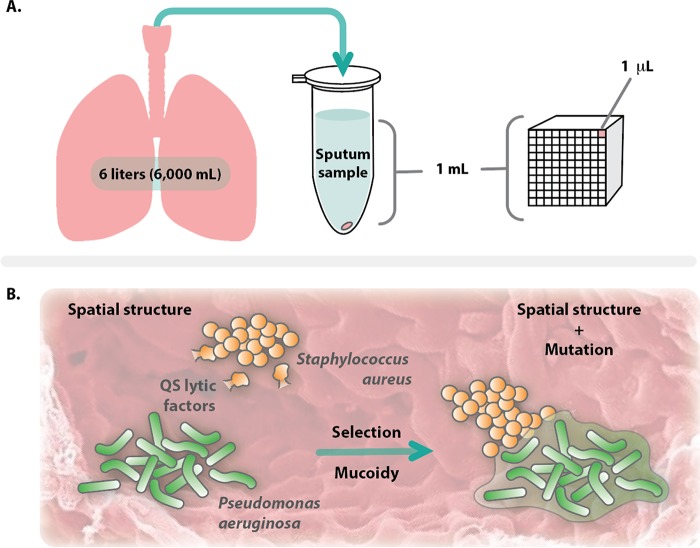FIG 1 .
Scale and spatial structure impact interactions between microbes in the CF lung. (A) Scale comparison of bacteria residing in the CF lung. The structure of the CF lung provides both a large surface area and volume. From an expectorated 1 ml sputum sample, approximately 109 bacteria occupy ~1 μl of this volume. The observation that bacteria exist as aggregates in the CF lung that must be localized within microns in order to interact suggests either that aggregates are either geographically isolated or in concentrated sites. (B) When aggregates are in concentrated sites, coexistence of S. aureus and P. aeruginosa is likely maintained by spatial structure, preventing lysis of S. aureus by QS-regulated lytic factors produced by P. aeruginosa. Selective pressure applied by the host often causes mucoid conversion of P. aeruginosa, which in turn alters spatial structure and changes how these two bacteria coexist.

